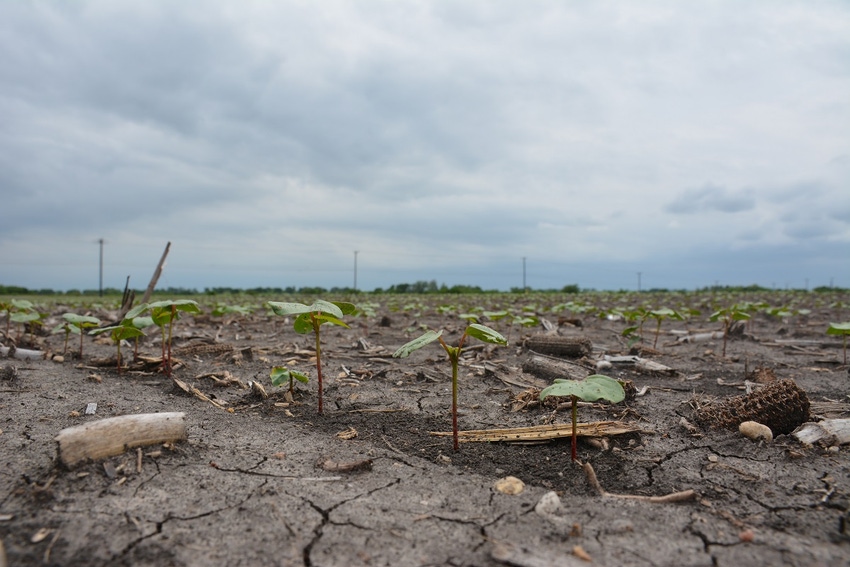April 27, 2015

So far 2015 is shaping up to be a strange year. California is in a widespread exceptional drought. Arizona is not much better with mostly moderate/severe drought ratings. The eastern half of the U.S. Cotton Belt has seen planting delays because of wetness.
And then there’s Texas with a mix of everything. The Gulf Coast region is so wet that considerable cotton and feedgrain acreage may fall under prevented planting insurance claims. Historically, this region plants around 500,000 acres of cotton. The southern end of the South Plains has been maintaining decent pre-plant moisture. However, this region is bordered by a huge arc of severe-to-exceptional drought stretching from the Oklahoma/North Texas Panhandle down past San Angelo. This drought stricken region typically accounts for between 1.5 million to 2.0 million acres of cotton plantings. Even with lower cotton planting intentions, this mixed moisture situation could cut into production expectations.
Having said all that, the market impact from tighter U.S. production may be minimal. We have a tendency to let our particular situation color our view of the big picture. For example, if it is very dry or very wet outside our back door, cotton farmers might think that the rest of the Cotton Belt (or the world) should take notice. And it might—if it were 1960 or even 1990. But cotton is a globally traded commodity. Hence what happens in Corpus Christi or Lubbock is only a small part of the world wide gamut of forces affecting cotton supply and demand.
Figure 1 shows the world production (in blue) and consumption (in red) of cotton. The scale of the graph is in millions of bales. Notice a couple of things with this chart. First, after a decade of stable consumption around 85 million bales, world consumption exploded to over 125 million bales. The reasons involve growth in world economies and relaxation of previous textile trade barriers. This is an example of how the cotton market is influenced by external economic and policy events.
For the latest on southwest agriculture, please check out Southwest Farm Press Daily and receive the latest news right to your inbox.
The second thing to notice is the gap of excess world production over consumption that began in 2011. This reflects the initial effect of $2 cotton (growers produce more, mills consume less). However, this gap was perpetuated by China holding its growing government reserve stocks off the market, keeping prices artificially high. This imbalance of supply and demand began to correct itself in 2014 with lower prices.
So the big-picture question is whether other major cotton producing countries like China, India, Pakistan, Brazil, etc., will cut back significantly on planted acreage. Reduced production is one force working to close that gap. A short crop in the U.S. will contribute to this, but it is only a part. The other force at work is increased consumption, which is being stimulated by lower prices. Hopefully, this demand effect won’t be slowed down by deflationary forces in Europe/Japan or slower growth in China. USDA’s current forecast is for enough cuts in production and increases in consumption to close the gap and whittle down world ending stocks by three million bales. USDA’s May Supply/Demand report will give an updated picture of world production and consumption. The cotton market will be paying close attention to those numbers.
For additional thoughts on these and other cotton marketing topics, please visit my weekly on-line newsletter.
About the Author(s)
You May Also Like




